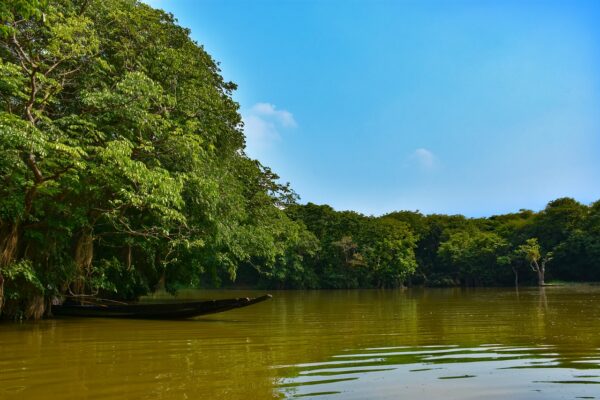A group of researchers from Princetown University, USA, developed a hydrogel that adsorbs water and simultaneously repels contaminants. If this hydrogel is slightly warmed up by sunlight, it releases clean water. This offers the opportunity to recover clean water from contaminated or salty resources without the need to use energy to drive water through filters or membranes or to evaporate water.
Hydrogels are water-absorbing materials made up of crosslinked polymers. The research team led by Prof. Rodney Priestley used a class of heat-responsive hydrogels that can regulate their ability to absorb or repel water when exposed to a critical switching temperature of about 33 °C – a temperature readily achieved using natural sunlight. In detail, the solar absorber gel is composed of an elastic thermoresponsive poly(N‐isopropylacrylamide) (PNIPAm) hydrogel, a photothermal polydopamine (PDA) layer, and a sodium alginate (SA) network.
Three components needed for absorbing water, absorbing sunlight and repelling salts, heavy metals, organic molecules and microbes
The PNIPAm gel that is originally transparent has a sponge-like, porous structure with an average pore diameter of around 50 µm. The addition of PDA, which changes the color of the gel from transparent to black, but not the elasticity or shape, exhibits broadband solar absorption and conversion efficiency of light. Besides the ability to induce a heat change by releasing the absorbed water, the amonio groups and aromatic rings of PDA allow for removing heavy metal ions and organic dyes. The third component, sodium alginate, helps repelling salts.
The function of the new solar absorber gel (SAG) was validated with water samples containing different contaminants like organic dyes and solvents as well as with natural water samples from Carnegie Lake. The lake water exhibited contamination of different bacteria, and it was shown that these bacteria could be blocked off by the hydrogel.
The SAG is reported to exhibit a water collection rate of 7.18 kg/(m2h) under one sun irradiation. Since the water purification mechanism does not require water evaporation, the passive purification rate is the highest reported.
The whole study incl. supplemental graphs and videos were published in Advanced Materials, https://doi.org/10.1002/adma.202007833.










